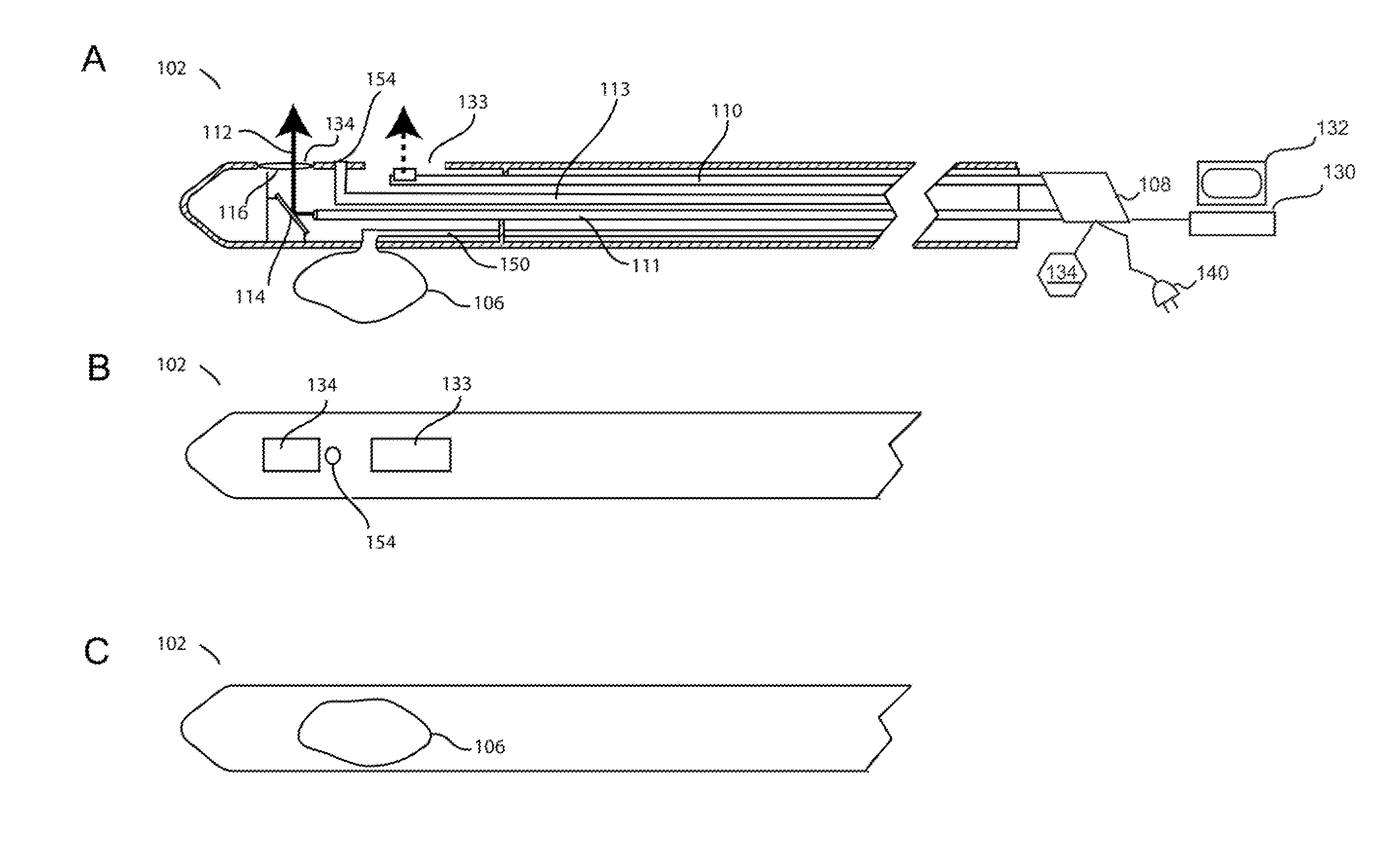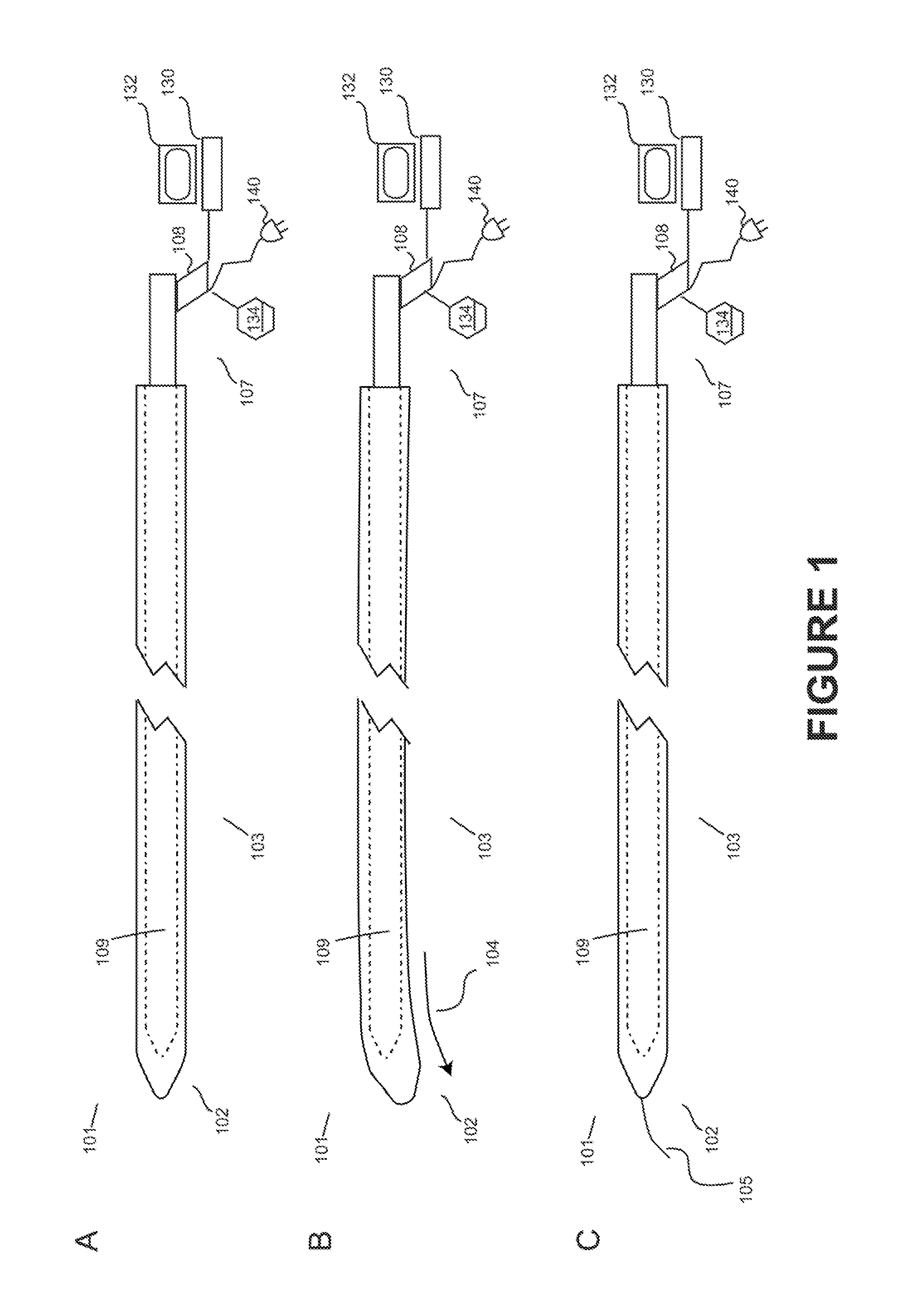Device for reducing renal sympathetic nerve activity
a technology of renal sympathetic nerve and device, applied in the field of catheterassisted devices, can solve the problems of increased blood pressure, increased reflex pathway regulation, and considerable morbidity,
- Summary
- Abstract
- Description
- Claims
- Application Information
AI Technical Summary
Benefits of technology
Problems solved by technology
Method used
Image
Examples
example 1
Sonogram of Human Renal Vasculature to Investigate Anatomy and Best Approach to Renal Artery
[0073]Increased renal sympathetic nerve activity is a major contributor to essential hypertension. However, the underlying cause of this centrally mediated increase in sympathetic nerve activity is unknown. The kidneys are highly sensitive to changes in blood pressure, and afferent sympathetic nerve traffic leading from the kidneys to the brain regulates reflex efferent sympathetic arterial constriction and vascular tone. The renal nerve branches from the renal plexus lying near the aorta and travels along the renal artery to the kidney. The renal nerve lies in close proximity to the renal artery and branches into a network, or plexus, of nerves nearer the kidney.
[0074]The main branch of the renal nerve lies immediately on top of the advential layer of the renal artery, encased in a layer of fat. Previous studies focused on determining whether a retroperitoneal approach, combined with imaging...
example 2
Histology of Pig Renal Artery Showing Renal Nerves
[0077]Materials and Methods.
[0078]The renal arteries were excised from Gottingen minipigs and placed in formalin for histological (H&E) staining. In FIG. 9, the renal artery is shown with distances from the lumen wall to the renal nerves.
Optical Coherence Tomography of Renal Nerves
[0079]To investigate the ability to visualize the renal nerve through the renal artery wall, freshly harvested pig renal arteries were obtained, still attached to the aorta and kidneys. The samples were placed on a dissection tray and excess fat was dissected from the renal artery. An incision was made in the abdominal aorta to facilitate placement of an OCT imaging catheter inside the renal artery. FIG. 11 is OCT imaging of the renal nerve, showing the location of the renal nerve in relation to the artery lumen. FIG. 10 shows H&E staining of the same section of renal artery verifying the ability to image the renal nerve through the renal artery wall.
example 3
Histology of Human Renal Artery Showing Renal Nerves
[0080]Materials and Methods.
[0081]The right renal artery from an 80 year old male cadaver is shown after histological (H&E) staining. Of significance to the usefulness of this device is the almost complete lack of intimal thicking or hyperplasia, FIG. 12 shows H&E staining of a section of the right renal artery. Renal nerves are shown. Separation of renal nerves from the renal artery is an artifact of tissue shrinkage and separation during formalin fixation.
Optical Coherence Tomography of Renal Nerves
[0082]To investigate the ability to visualize the renal nerve through the renal artery wall, the renal artery with renal nerves attached from an 80 year old male cadaver was thawed in room temperature saline and placed on a tray for optical coherence visualization. FIG. 13 is OCT imaging of the renal nerves, showing the location of the renal nerves in relation to the artery lumen.
PUM
 Login to View More
Login to View More Abstract
Description
Claims
Application Information
 Login to View More
Login to View More - R&D
- Intellectual Property
- Life Sciences
- Materials
- Tech Scout
- Unparalleled Data Quality
- Higher Quality Content
- 60% Fewer Hallucinations
Browse by: Latest US Patents, China's latest patents, Technical Efficacy Thesaurus, Application Domain, Technology Topic, Popular Technical Reports.
© 2025 PatSnap. All rights reserved.Legal|Privacy policy|Modern Slavery Act Transparency Statement|Sitemap|About US| Contact US: help@patsnap.com



